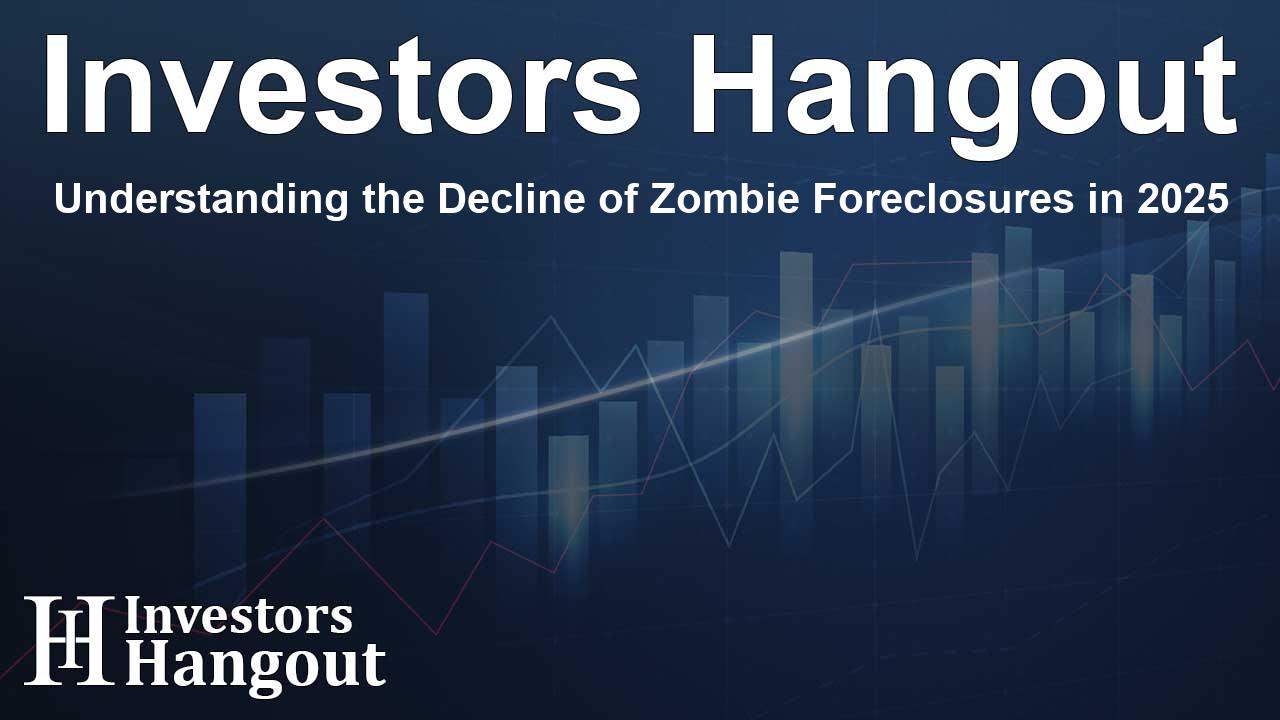Understanding the Decline of Zombie Foreclosures in 2025

The State of Zombie Foreclosures in 2025
In recent times, zombie foreclosures have become an even smaller fraction of the housing market. The latest data reveals that only 1 out of every 14,700 homes is currently vacant due to foreclosure, which marks one of the lowest levels observed in the past five years.
Current Trends in Foreclosures
In the first quarter of 2025, 7,094 properties are classified as zombie foreclosures, which are homes left abandoned by their owners during the foreclosure process. This figure is consistent with the previous quarter but shows a 3.3 percent decrease compared to last year.
Overall, foreclosure activity in the U.S. has been on a steady decline. Recent reports indicate that the number of residential properties in foreclosure has dropped to 212,268, a decrease of 1.5 percent from the previous quarter and down 12.6 percent year-over-year. This steady decline in foreclosures follows a period in which foreclosures surged after the lifting of pandemic-related moratoriums on foreclosures.
The Impact of Housing Market Trends
The reduction in zombie foreclosures highlights a broader trend within the housing market. Over the past decade, the market has been experiencing a significant recovery, leading to increased home equity and lower numbers of vacant properties. As a result, neighborhoods that once dealt with the blight of abandoned homes are now seeing improvements, attracting potential buyers and enhancing community vitality.
Long-Term Patterns of Zombie Properties
The report indicates that only 1 in every 14,668 homes across the nation is considered a zombie foreclosure. This represents an improvement from the previous year's numbers, and the trend seems to continue indicating robust market stability.
Most areas remain largely free from these blighted properties, allowing local communities to thrive better. According to Rob Barber, CEO of ATTOM, finding a zombie foreclosure in most neighborhoods would require a substantial effort. He noted that this is in stark contrast to the period post the Great Recession, where many communities suffered due to high foreclosure rates.
State-wise Analysis of Zombie Foreclosures
Highlighting regional differences, the report reveals that 22 states have seen a decrease in zombie foreclosures, while 28 states have experienced small increases. States like Maryland and Georgia demonstrated the most significant reductions, while Missouri and Michigan have seen increases in abandoned properties over the same period.
Understanding Vacancy Rates
The overall vacancy rate for residential properties has remained stable at approximately 1.32 percent, indicating little fluctuation over the last several quarters. States such as Oklahoma and Kansas currently face the highest vacancy rates, indicating localized challenges in those markets.
In contrast, states like New Hampshire and Vermont demonstrate the lowest vacancy rates, showcasing a demand for housing in these regions. Notably, the dynamics in investor-owned properties reveal that about 3.5 percent or approximately 877,800 investor-owned homes are vacant.
Key Findings and Future Implications
Insights from metropolitan statistical areas affirm that cities like Peoria and Wichita have higher rates of vacant properties in the foreclosure process. Moreover, the corporation ATTOM continues to analyze data meticulously to enhance insights into the housing market.
Looking Ahead: Strong Market & Equity Growth
As flow from rising home prices remains substantial, many analysts believe the trend of declining zombie foreclosures will persist. This upward trajectory in home equity is expected to foster further stability within the market, benefiting both homeowners and renters. The ongoing challenges of home supply remain a focal concern, but the resilience demonstrated through lower foreclosure rates is promising.
Frequently Asked Questions
What are zombie foreclosures?
Zombie foreclosures refer to properties that are in the foreclosure process but have been abandoned by the owners, leaving them vacant.
How have zombie foreclosure trends changed recently?
There has been a consistent decline in zombie foreclosures, with a notable decrease from the previous years and stabilization in numbers across various states.
What is the overall vacancy rate of properties in the U.S.?
The overall vacancy rate for residential properties in the U.S. is currently about 1.32%, showing minimal fluctuations over the last 12 quarters.
What is the impact of rising home prices on foreclosures?
Rising home prices generally lead to increased equity for homeowners, reducing the likelihood of foreclosures and the occurrence of zombie properties.
How do zombie foreclosures differ between states?
The trends vary significantly by state, with some states reporting decreases and others facing increases in the number of vampire properties.
About The Author
Contact Addison Perry privately here. Or send an email with ATTN: Addison Perry as the subject to contact@investorshangout.com.
About Investors Hangout
Investors Hangout is a leading online stock forum for financial discussion and learning, offering a wide range of free tools and resources. It draws in traders of all levels, who exchange market knowledge, investigate trading tactics, and keep an eye on industry developments in real time. Featuring financial articles, stock message boards, quotes, charts, company profiles, and live news updates. Through cooperative learning and a wealth of informational resources, it helps users from novices creating their first portfolios to experts honing their techniques. Join Investors Hangout today: https://investorshangout.com/
The content of this article is based on factual, publicly available information and does not represent legal, financial, or investment advice. Investors Hangout does not offer financial advice, and the author is not a licensed financial advisor. Consult a qualified advisor before making any financial or investment decisions based on this article. This article should not be considered advice to purchase, sell, or hold any securities or other investments. If any of the material provided here is inaccurate, please contact us for corrections.
